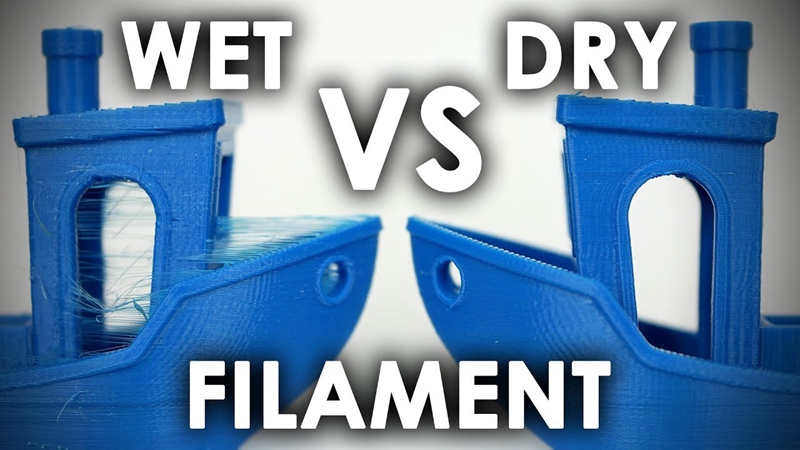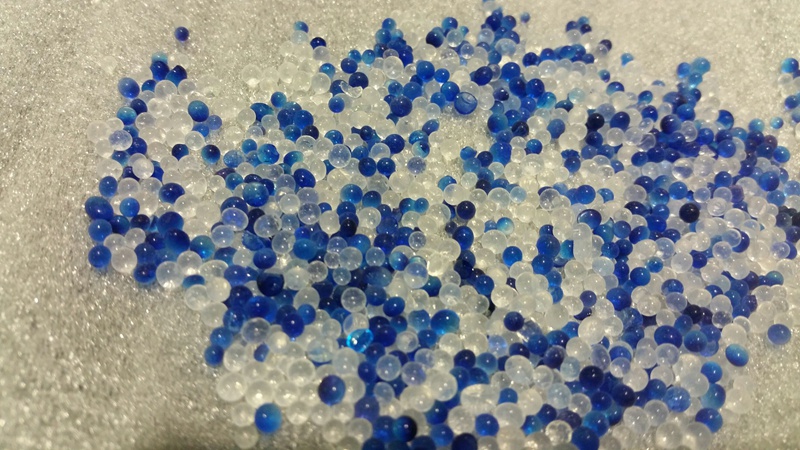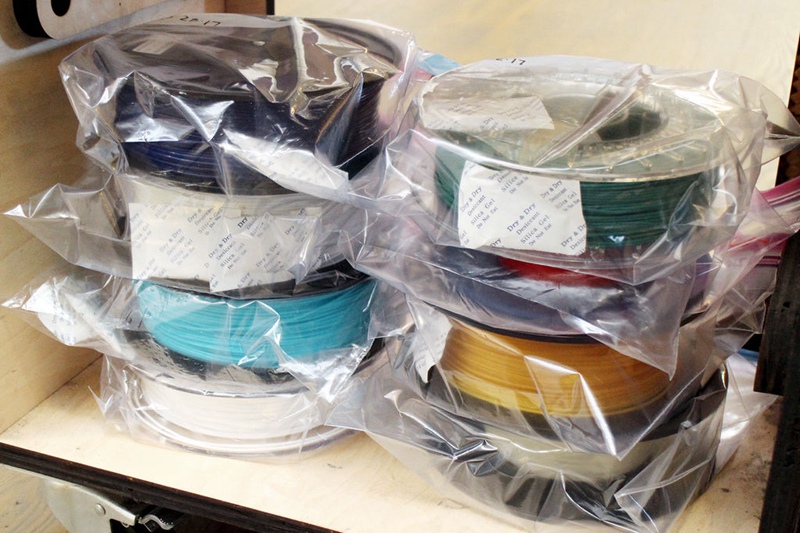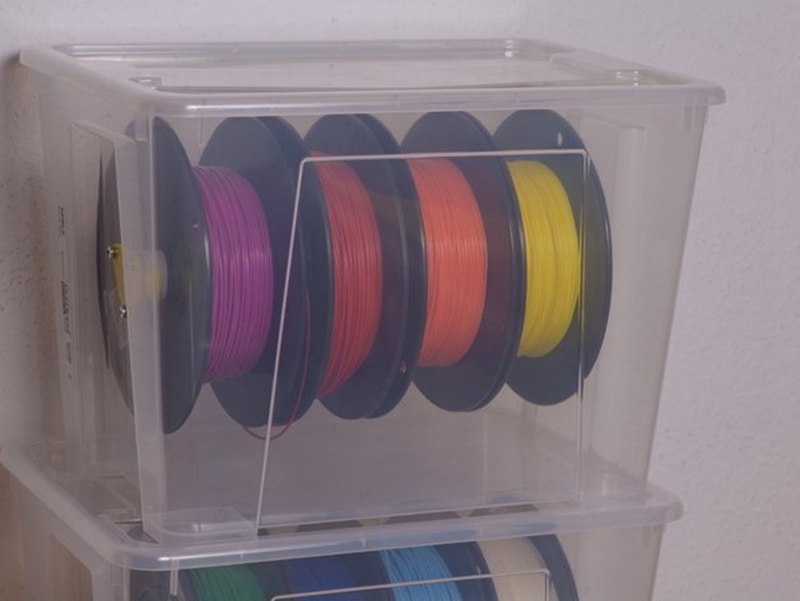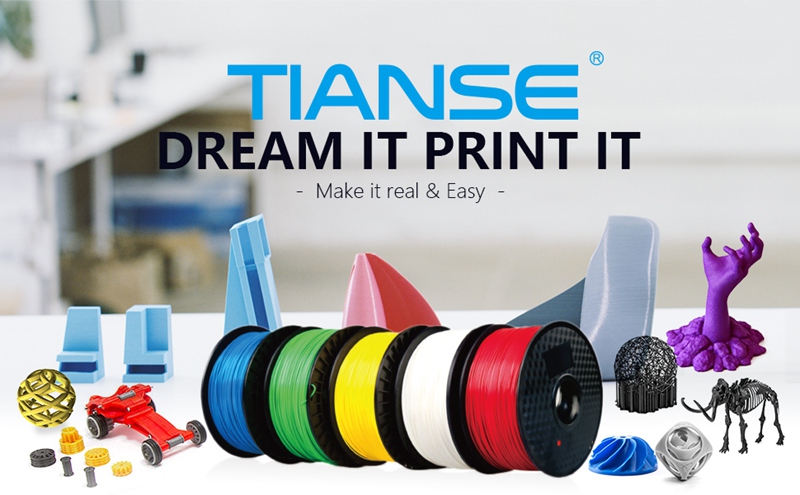Not long after getting into the magical world of 3D printing, you start learning about all the different ways people use to store their 3D filaments. Moisture and humidity: these words send shivers down the spines of 3D printer filament worldwide. There are numerous stories on the Internet of 3D makers who find their new filaments ruined from moisture in the air. Proper filament storage is key to quality print results, whereas an improperly stored filament may become brittle, snap easier, and change colors. In this article, we’ll introduce you some of the easy ways on how to store your 3D printer filament and keep it dry.
Why You Should Care About Filament Storage
It’s a very understandable question. Most thermoplastics used in 3D printing are hygroscopic, so they absorb water from the air if left unprotected. If you simply leave your 3D filament out in the open, it can cause poor-quality prints.
The resulting effects on your filaments or finished prints aren’t pretty either, as below are some of the things that can happen to your filament once it absorbs moisture:
- Filament degradation
- Increased brittleness
- Diameter augmentation
- Filament bubbling/hissing steam at the hot-end
- Printer/nozzle jams
- Higher temperature required for extrusion
- Weak filament & breakage
Of course, the extent to which your filament is affected by humidity varies depending on the type of filament you use. Some filament types are more susceptible to moisture than others, for instance, nylons are bad as they can absorb moisture after just 18 hours when out in the open. PVA, even worse, as it is used for support structures whereby afterwards it can dissolve in water. PLA and ABS can absorb moisture as well (PLA more than ABS). However, keeping all your 3D printer filaments in a moisture-free environment won’t hurt.
How To Keep Moisture and Humidity Away From Your Filament
The following are a few cheap and easy ways we recommend on how to store your 3D printer filament and keep it dry.
1. Use Desiccants to Absorb Moisture
Silica gel is the most effective and well-documented desiccant for keeping 3D filament dry. These are small packets of moisture absorbing gel you find in your vitamin bottles and shoe boxes. You can purchase silica beads that would change color as an indicator if the beads have exceeded a certain amount of water. Once the beads change color, you can put them in an oven for 3 hours at 120°C and they will turn back to their original color for you to re-use. To store the gel, put it in any container with slots or holes for air.
2. Use Vacuum-Sealed Bags
You could buy an expensive plastic casing for your individual rolls, or build an anti-humidity box on your own to protect your filament from moisture, or, you could just buy regular vacuum-sealed bags. These differ from Ziploc bags as they have an opening where you can stick your vacuum end in it to suck all the air out. Why vacuum-sealed bags a proper solution? Well, they keep all types of moisture, odors, bugs and mildew away from your precious filament. To use your filament, you’ll have to take it out of the bag and reseal it after.
3. Use Air-tight Buckets or Containers
This is an alternative to vacuum-sealed bags and could be anything from your pet food containers to large buckets you can find from any home hardware store. There are lids with dehydrator built in called gamma lids which you can get from a home hardware store as well.
4. Use Your Filament – Often
Naturally, filament quality will degrade over time irrespective of the steps you take to keep moisture away. Keeping too many and forgetting to use all of it, or simply not using the ones you have, is not the best option if the filament is kept in an open area for extended periods of time. Note that keeping filament for more than 12 months can result in moisture absorption, depending on the filament type. The sensible thing to do would be to buy only what you need, and make sure to use it all within a couple of weeks/months.
With all these different or new types of filament in the marketplace, it’s just hard to know how to care for and store each one differently. We therefore recommend, when in doubt – keep it in a dry, cool place out of direct sunlight. We also hope the above-mentioned easy tips on how to store your 3D printer filament and keep it dry would be helpful. Happy 3D printing!
Post time: Mar-22-2019

